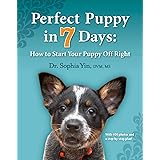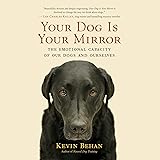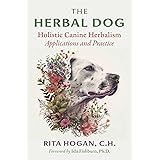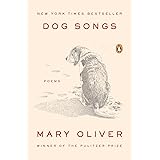As highlighted in the insightful video above, engaging your dog in scent work offers profound benefits, with just 15 minutes of dedicated sniffing often equating to a full hour of vigorous physical play. This remarkable activity taps into a dog’s most powerful sense, providing unparalleled mental stimulation and enrichment. It’s not merely about keeping them busy; it’s about fulfilling an innate canine drive that can significantly improve their overall well-being and behavior.
Harnessing your dog’s natural instincts through targeted activities like scent games can unlock a calmer, more focused companion. Products like the Snuffle Seek Enrichment toy, which features pouches filled with specific scents such as anise, serve as excellent starting points for this journey. This article will delve deeper into why scent work is so vital for dogs, how to effectively get started, and the diverse advantages it brings to both you and your furry friend.
Understanding the Canine Olfactory Superpower: Why Scent Work Matters
Dogs possess an extraordinary sense of smell, far surpassing that of humans. Their noses contain up to 300 million olfactory receptors, compared to our modest 6 million, granting them an unparalleled ability to detect and differentiate scents. This incredible sensory apparatus is not just a biological marvel; it’s the primary way dogs interpret their world, gather information, and make sense of their environment. Engaging this powerful sense through scent work provides a crucial outlet for their natural drives.
Scientific studies reinforce the importance of olfactory stimulation for canine cognition and emotional health. When a dog engages in detailed sniffing, their brain is actively working, processing complex scent profiles and solving intricate puzzles. This intense mental engagement is precisely why short periods of nose work can be as tiring and fulfilling as much longer bouts of physical exercise. It transforms a simple walk into an information-rich exploration, boosting their confidence and reducing stress.
The Profound Benefits of Canine Scent Training and Sniff Games
Implementing scent work into your dog’s routine offers a wide array of advantages that extend beyond mere entertainment. Firstly, it provides essential mental enrichment, combating boredom and preventing destructive behaviors often stemming from a lack of mental stimulation. A dog that is mentally tired is often a well-behaved dog, less prone to chewing furniture or excessive barking, as their cognitive needs are being met in a constructive way.
Secondly, scent work is an excellent low-impact activity, making it suitable for dogs of all ages, sizes, and physical conditions, including senior dogs or those recovering from injuries. It builds confidence in shy or anxious dogs, as they learn to trust their own abilities and instincts in solving scent puzzles. Furthermore, it strengthens the bond between dog and owner, as you work together as a team, communicating and achieving goals through positive reinforcement and shared success.
1. Boosting Mental Stimulation and Reducing Boredom
The mental effort required for scent detection is immense, far more taxing than many physical activities. Imagine deciphering a complex tapestry of smells, identifying a target odor amidst countless distractions—this is what your dog’s brain is doing. This intense cognitive workout effectively combats boredom, a common cause of problematic behaviors in domestic dogs. Dogs who regularly engage in scent work are often more relaxed and content.
This type of enrichment can be particularly beneficial for breeds with high working drives, such as retrievers or herding dogs, who thrive on having a “job” to do. Even companion breeds benefit greatly from these brain games, channeling their energy into positive, instinct-driven tasks. Providing appropriate mental challenges ensures that your dog’s intelligence is acknowledged and utilized, contributing significantly to their overall happiness.
2. Enhancing Focus and Building Confidence
Scent training requires intense focus, teaching dogs to concentrate on a specific task and tune out distractions. This improved focus can translate into other areas of their training and daily life, making them more attentive companions. The process of successfully locating a hidden scent provides a huge confidence boost, particularly for dogs who might be insecure or nervous in new environments. They learn to trust their nose and their abilities.
Observing your dog meticulously working a scent puzzle can be incredibly rewarding, witnessing their innate intelligence in action. This self-rewarding aspect of scent work means dogs quickly become enthusiastic participants, eager for their next “hunt.” The positive feedback loop of finding the scent fosters a stronger sense of accomplishment, reinforcing good behavior and making training enjoyable for both dog and owner.
3. Providing a Safe and Accessible Activity for All Dogs
Unlike high-impact sports, scent work is gentle on joints and muscles, making it ideal for dogs of any age or physical ability. Puppies can start early, developing foundational skills and confidence, while senior dogs can maintain mental acuity without physical strain. Dogs with limited mobility or those recovering from surgery can still participate fully, benefiting from the mental engagement without exacerbating physical issues.
Furthermore, scent work is highly adaptable to various environments, whether indoors during inclement weather or outdoors in a controlled setting. It requires minimal equipment to start, often just a few treats and a quiet space, making it an incredibly accessible enrichment option. This versatility ensures that virtually every dog can experience the joy and benefits of working their nose, regardless of their circumstances.
Getting Started with Dog Scent Work: Practical Training Tips
Initiating your dog into the world of scent work is surprisingly straightforward, and the video’s mention of the Snuffle Seek toy provides an excellent entry point. The key is to make it fun, positive, and progressively more challenging. Begin in a low-distraction environment, allowing your dog to fully concentrate on the new task. Remember, patience and positive reinforcement are your most powerful tools.
Start by simply letting your dog investigate the scent, whether it’s anise from a specific product or a favorite high-value treat. Reward any interest shown in the target odor immediately and enthusiastically. As they grasp the concept, gradually increase the difficulty by hiding the scent in more challenging locations or within more complex puzzles. Always end on a high note, leaving your dog eager for the next session.
1. Introducing the Target Scent
The first step involves familiarizing your dog with the specific odor you’ll be using for training, such as the anise found in the Snuffle Seek pouches. Start by letting your dog sniff the scented object directly. Many trainers use small cotton swabs infused with the scent, or dedicated scent oils like those used in competitive nose work. Reward them heavily with praise and a high-value treat the moment they show interest in the scent, even if it’s just a brief sniff.
Repeated short sessions, perhaps 2-3 times a day for a few minutes each, will help your dog associate the specific scent with positive outcomes. It’s crucial to make this initial introduction a completely stress-free and rewarding experience. This positive association forms the foundation for all future scent detection work, ensuring your dog is motivated and excited to engage with the target odor whenever it appears.
2. The Hide and Seek Game
Once your dog recognizes the target scent, you can begin simple hide-and-seek games. Start by placing the scented item or toy in an obvious location, perhaps just a few feet away, while your dog watches. Encourage them to find it with a cue like “Find it!” and reward them generously when they do. This initial step teaches them the game’s mechanics: smell, search, and find for a reward.
As your dog gains confidence, gradually increase the difficulty of the hides. Initially, hide the item partially, then fully, and eventually in more challenging spots where they truly need to use their nose. Begin by hiding it in the same room, then move to different rooms, and eventually outdoors. The goal is to build their searching skills incrementally, celebrating every successful find with enthusiasm and a tasty treat.
3. Utilizing Different Environments and Distractions
To truly challenge and develop your dog’s scent-detecting abilities, it’s vital to introduce varied environments and mild distractions. What your dog learns in a quiet living room might not immediately translate to a busy park with many competing smells. Begin by practicing in different rooms of your house, then move to your backyard, and eventually to public, dog-friendly spaces. Each new environment presents unique olfactory challenges.
Gradually introduce distractions, such as other toys or minor background noises, to help your dog maintain focus on the target scent. This process of generalization is key to building a robust scent detection skill. Remember to keep sessions short, positive, and always set your dog up for success. Celebrate their efforts, and you’ll soon have a canine scent detective on your hands, enjoying all the benefits of dedicated dog scent work.









